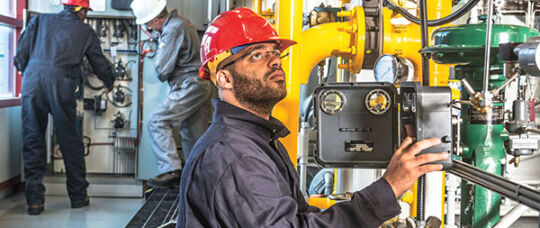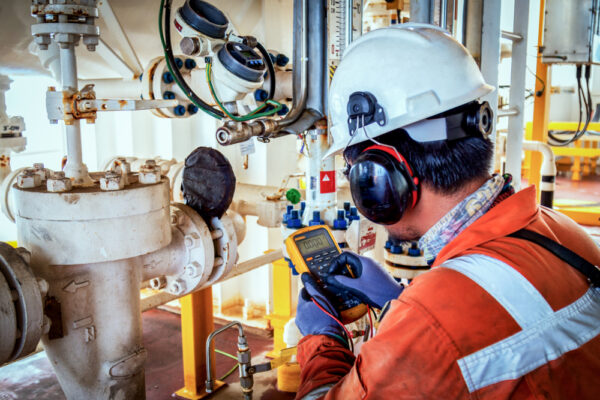Fascination About Roar Solutions
Fascination About Roar Solutions
Blog Article
Some Ideas on Roar Solutions You Need To Know
Table of ContentsHow Roar Solutions can Save You Time, Stress, and Money.3 Easy Facts About Roar Solutions ShownRoar Solutions Can Be Fun For Everyone
In order to shield installations from a potential surge a technique of evaluating and classifying a possibly unsafe location is needed. The objective of this is to make certain the proper choice and setup of tools to ultimately protect against an explosion and to ensure safety and security of life.
(https://profiles.delphiforums.com/n/pfx/profile.aspx?webtag=dfpprofile000&userId=1891249800)
No devices needs to be mounted where the surface area temperature of the devices is higher than the ignition temperature of the offered threat. Below are some common dust hazardous and their minimal ignition temperature level. Coal Dust 380C 225C Polythene 420C (melts) Methyl Cellulose 420C 320C Starch 460C 435C Flour 490C 340C Sugar 490C 460C Grain Dust 510C 300C Phenolic Resin 530C > 450C Aluminium 590C > 450C PVC 700C > 450C Residue 810C 570C The likelihood of the risk being existing in a focus high enough to cause an ignition will differ from place to place.
Harmful area electric equipment maybe developed for usage in higher ambient temperatures. Area Repair By Authorised Personnel: Difficult testing may not be required however details procedures may need to be adhered to in order for the equipment to maintain its 3rd event ranking. Each item of tools with a harmful rating ought to be evaluated individually.
The 6-Minute Rule for Roar Solutions
The equipment register is an extensive database of equipment documents that includes a minimum set of fields to recognize each item's place, technological parameters, Ex-spouse classification, age, and ecological data. This information is critical for monitoring and handling the devices effectively within unsafe locations. On the other hand, for routine or RBI tasting inspections, the quality will certainly be a combination of Detailed and Close assessments. The ratio of Comprehensive to Shut inspections will be established by the Tools Danger, which is analyzed based upon ignition risk (the chance of a resource of ignition versus the probability of a flammable atmosphere )and the dangerous location classification
( Zone 0, 1, or 2). This variation will additionally influence the resourcing needs for job prep work. When Great deals are specified, you can establish sampling plans based upon the example size of each Great deal, which refers to the number of arbitrary equipment items to be checked. To figure out the called for sample dimension, 2 elements require to be reviewed: the dimension of the Great deal and the group of examination, which indicates the degree of initiative that should be used( decreased, typical, or enhanced )to the examination of the Great deal. By combining the group of inspection with the Lot size, you can after that develop the appropriate being rejected standards for an example, implying the permitted number of damaged products found within that sample. For more details on this process, please describe the Power Institute Standards. The IEC 60079 common recommends that the optimum period between assessments need to not go beyond 3 years. EEHA inspections will additionally be carried out outside of RBI campaigns as component of scheduled maintenance and devices overhauls or repair services. These inspections can be attributed towards the RBI sample dimensions within the affected Lots. EEHA assessments are conducted to determine mistakes in electric equipment. A weighted scoring system is essential, as a single piece of equipment might have multiple faults, each with varying degrees of ignition threat. If the combined score of both evaluations is less than twice the mistake score, the Great deal is considered acceptable. If the Lot is still considered unacceptable, it has to go through a complete evaluation or justification, which may trigger stricter examination protocols. Accepted Lot: The causes of any type of faults are recognized. If a common failing setting is found, extra equipment may call for assessment and repair service. Faults are categorized by seriousness( Safety, Stability, Home cleaning ), making sure that immediate issues are examined and attended to immediately to alleviate any type of effect on safety and security or operations. The EEHA database need to track and tape-record the lifecycle of mistakes along with the rehabilitative actions taken. Applying a robust Risk-Based Evaluation( RBI )strategy is essential for ensuring conformity and safety in managing Electrical Devices in Hazardous Areas( EEHA) (hazardous area electrical course). Automated Fault Rating and Lifecycle Management: Easily manage mistakes and track their lifecycle to improve evaluation precision. The introduction of this support for risk-based evaluation even more strengthens Inspectivity's setting as a best-in-class service for regulatory conformity, as well as for any kind of asset-centric evaluation use situation. If you have an interest in finding out more, we invite you to ask for a demo and uncover exactly how our service can change your EEHA management processes.
The Only Guide to Roar Solutions

In terms of eruptive danger, a hazardous location is an environment in which an eruptive environment is present (or may be expected to be existing) in quantities that require special precautions for the building, installment and usage of tools. hazardous area electrical course. In this write-up we check out the challenges faced in the workplace, the risk control steps, and the required competencies to function securely
It issues of modern-day life that we produce, keep or manage a variety of gases or liquids that are deemed flammable, and a variety of dirts that are considered combustible. These materials can, in particular problems, form eruptive ambiences and these can have significant and awful effects. Many of us are acquainted with the fire triangular eliminate any among the 3 aspects and the fire can not take place, however what does this mean in the context of hazardous areas? When breaking this down into its simplest terms it is basically: a mix of a particular quantity of launch or leak of a specific substance or product, combining with ambient oxygen, and the visibility of a source of ignition.
In many instances, we can do little regarding the degrees of oxygen in the air, yet we can have substantial impact on sources of ignition, for instance electric equipment. Dangerous areas are recorded on the hazardous area classification drawing and are recognized on-site by the triangular "EX LOVER" indicator. Below, amongst other vital details, zones are split into three kinds depending on the threat, the likelihood and duration that an eruptive ambience will certainly exist; Zone 0 or 20 is deemed the most dangerous and Zone 2 or 22 is deemed the least.
Report this page